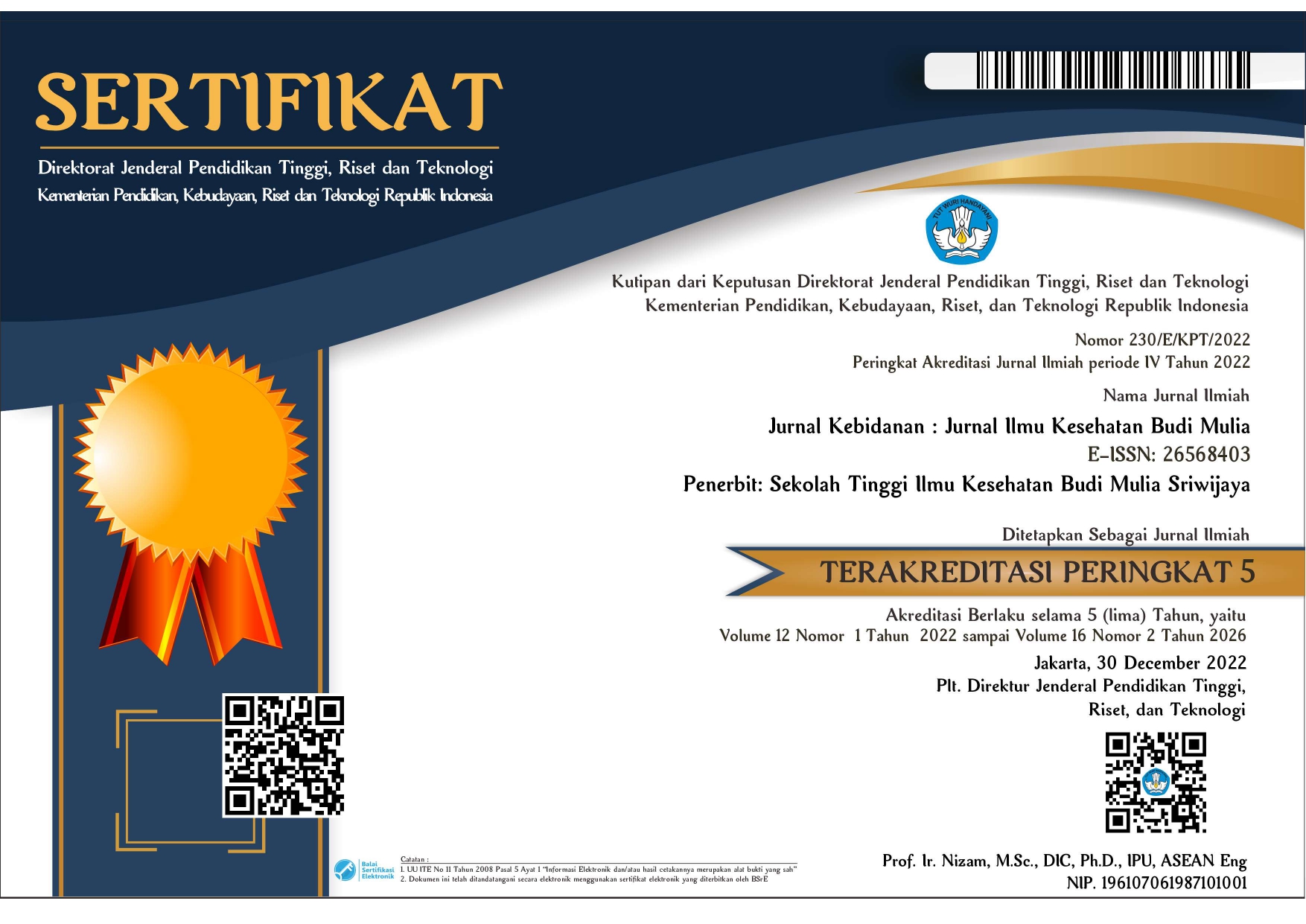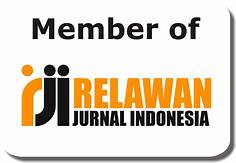FAKTOR – FAKTOR YANG BERHUBUNGAN DENGAN PEMAKAIAN KONTRASEPSI IUD (INTRA UTERINE DEVICE) OLEH AKSEPTOR KB DI KLINIK BUDI MULIA MEDIKA PALEMBANG TAHUN 2012
Abstract
ABSTRACT
According to WHO (World Healthy Organization) the population of Indonesia is now ranked 4th in the world. On 2010 the number of family planning acceptors at 25 373 acceptors implants (12.2%) and 15 812 IUD for acceptors(7.7%), factors that influence the decline in the number of participants IUD is the age of <knowledge, attitudes (Proverawati, 2010). The purpose of this study are known factors associated with IUD contraception by family planning acceptors in Palembang Medical Clinic Budi Mulia 2012. This type of research uses analytical survey method with cross sectional approach, other research in this population is the entire implant and IUD family planning acceptors in the free service was held in Palembang Medical Clinic Budi Mulia In 2012 amounted to as much as 52 acceptors, with a sample of 52 family planning acceptors and IUD implants taken in a non-random sampling using accidental sampling technique. Univariate analysis of the results obtained from the respondents who use the contraceptive IUD acceptors were 19 (36.5%), with a high risk as much as 37 PUS (71.2%), good knowledge of acceptors by 22 (42.3%), and who have an attitude acceptors positive in 23 (44.7%). While the results of bivariate analysis using Chi-Square test showed that there is a relationship between maternal age with an IUD contraceptive use with the P value 0.009, no relationship between knowledge of contraceptive use to women with an IUD with a value of P value 0.008, and there is a relationship between maternal attitudes with the use of contraceptive IUD with a value of P value 0.002. From the results of this survey should be conducted by counseling for all family planning acceptors about the importance of IUD is a long-term contraception.
ABSTRAK
Menurut WHO (World Healthy organization) jumlah penduduk Indonesia kini menduduki peringkat ke-4 di dunia. Pada tahun 2010 jumlah akseptor KB implan sebesar 25.373 PUS (12,2%) dan KB IUD sebesar 15.812 PUS (7,7%), factor yang mempengaruhi turunnya jumlah peserta KB IUD adalah umur< pengetahuan, sikap (Proverawati,2010). Tujuan dari penelitian ini adalah diketahuinya factor-faktor yang berhubungan dengan pemakaian kontrasepsi IUD oleh akseptor KB di Klinik Budi Mulia Medika Palembang Tahun 2012. Jenis penelitian ini menggunakan metode survey analitik dengan pendekatan cross sectional, populasi dalam peneltian ini adalah seluruh akseptor KB implan dan IUD di pelayanan gratis yang diadakan di Klinik Budi Mulia Medika Palembang Tahun 2012 berjumlah sebanyak 52 akseptor, dengan jumlah sampel 52 akseptor KB implan dan IUD yang diambil secara non random sampling dengan menggunakan tehnik accidental sampling. Dari hasil analisis univariat didapatkan hasil respoden yang menggunakan kontrasepsi IUD sebanyak 19 PUS (36,5%), dengan resiko tinggi sebanyak 37 PUS (71,2%), pengetahuan baik sebanyak 22 PUS (42,3%), dan yang mempunyai sikap positif sebanyak 23 PUS (44,7%). Sedangkan dari hasil analisis bivariat dengan menggunakan uji Chi-Square didapatkan hasil bahwa ada hubungan antara umur ibu dengan pemakaian kontrasepsi IUD dengan nilai P value 0,009, ada hubungan antara pengetahuan ibu dengan pemakaian kontrasepsi IUD dengan nilai P value 0,008, dan ada hubungan antara sikap ibu dengan pemakaian kontrasepsi IUD dengan nilai P value 0,002. Dari hasil penelitian ini seharusnya dilakukan penyuluhan atau konseling terhadap semua akseptor KB tentang pentingnya KB IUD yaitu alat kontrasepsi jangka panjang.











